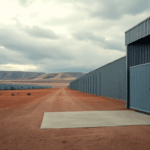Table of Contents
The AI infrastructure challenge
As the world shifts towards a digital economy, the race for artificial intelligence (AI) supremacy is heating up. The recent Senate hearing on U.S. competitiveness in AI highlighted a crucial reality: America is not just competing with China but is also racing to establish the foundation of the 21st-century global economy.
This foundation is built on advanced computing infrastructure, which is essential for unleashing AI’s full potential.
Why infrastructure matters
The current digital infrastructure, primarily designed for general-purpose cloud computing, is inadequate for the demands of AI workloads. These workloads require immense computational power, advanced cooling systems, and ultra-high-speed networking.
The existing infrastructure simply cannot support the trillions of calculations needed for AI to thrive. To maintain a competitive edge, the U.S. must invest in specialized AI cloud platforms that can handle these demands.
Global competition and urgency
China’s aggressive investment in AI infrastructure underscores the urgency for the U.S.
to act. The nation recognizes that technological dominance is key to global influence. If America wants to remain a leader in AI, it must prioritize building its infrastructure with the same urgency. This includes creating a transparent regulatory environment, ensuring access to affordable energy, and fostering public-private partnerships to develop a skilled workforce.
Public-private partnerships for success
Collaboration between the private sector, academia, and government is essential for building the future of AI. Initiatives like the New Jersey AI Hub demonstrate how these partnerships can effectively address the challenges of AI infrastructure.
By pooling resources and expertise, stakeholders can create a robust ecosystem that supports innovation and job creation. This collaborative approach is vital for ensuring that the U.S. remains at the forefront of AI development.
The economic opportunity
Investing in AI infrastructure is not just about technology; it represents a significant economic opportunity.
According to IDC, there is a potential $20 trillion market by 2030 for the nation that successfully builds its AI capabilities. This investment will not only enhance national security but also lead to breakthroughs in critical areas such as healthcare and education. The future of AI is not guaranteed; it will go to the country that acts swiftly and decisively.
Conclusion
As we navigate this generational moment, it is crucial to treat AI infrastructure as a strategic asset. By prioritizing investment and job creation in this sector, the U.S. can secure its position as a leader in the global AI landscape. This is not merely a technological issue; it is an American issue that requires collective action and vision.





